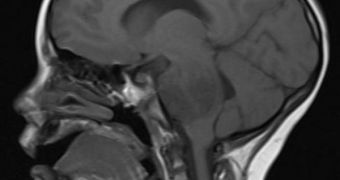Researchers at the Virginia Commonwealth University (VCU) and Virginia Tech (VT) recently unveiled a new nanoparticle-based compound, which they say could be used to fight brain cancer.
The chemical is made up of a special type of nanoscale particles, and can be used to diagnose tumors in the human brain. After cancer cells have been confirmed, the same compound can release potent drugs, annihilating the troublesome cells with few side-effects for the surrounding, healthy tissue.
Experts are particularly proud of the fact that they managed to create an agent with a dual function – diagnosis plus treatment. When put to large-scale use, the compound will be able to improve the diagnosis, imaging and treatment of brain tumors.
In order to obtain the most relevant results, the investigators focused their attention on glioblastomas, one of the most unforgiving, common and aggressive forms of brain cancer. This specific subtype of cancer also carries a high relapse rate.
One of the things that make glioblastomas very hard to treat is the fact that damaged cells oftentimes extend far beyond the visible boundaries of the tumor. As such, surgeons cannot use surgery alone and expect to eradicate the cancer.
This type of spread is also one of the reasons why the cancer relapses so often. Experts have been looking for advanced methods of fighting these cells for many years, and it would appear that their efforts have finally paid off.
The VCU/VT published details of its new therapeutic approach in the August issue of the medical journal Radiology. The team describes the nanoparticles they are using to carry MRI agents directly to infected cells.
VCU School of Medicine former professor and chair of the Division of Radiation Physics and Biology, Panos Fatouros, PhD, explains that the carrier particle delivers the agent inside the tumor, where damaged cells are highlighted. The same setup is then used to deliver radiation to the tumors.
The nanoparticle carries the sensitive MRI contrast agent gadolinium and the radioactive isotope lutetium 177. While the former is included inside the carrier vehicle – so as to shield it from the action of the immune system – the latter is attached to the exterior of the nanoparticles.
“We believe the clustering properties of this nanoplatform prolong its retention within the tumor, thereby allowing a higher radiation dose to be delivered locally,” VCU School of Medicine Department of Radiology research fellow Michael Shultz, PhD, explains.
“This theranostic agent could potentially provide critical data about tumor response to therapy by means of longitudinal imaging without further contrast administration,” Fatouros concludes.

 14 DAY TRIAL //
14 DAY TRIAL //